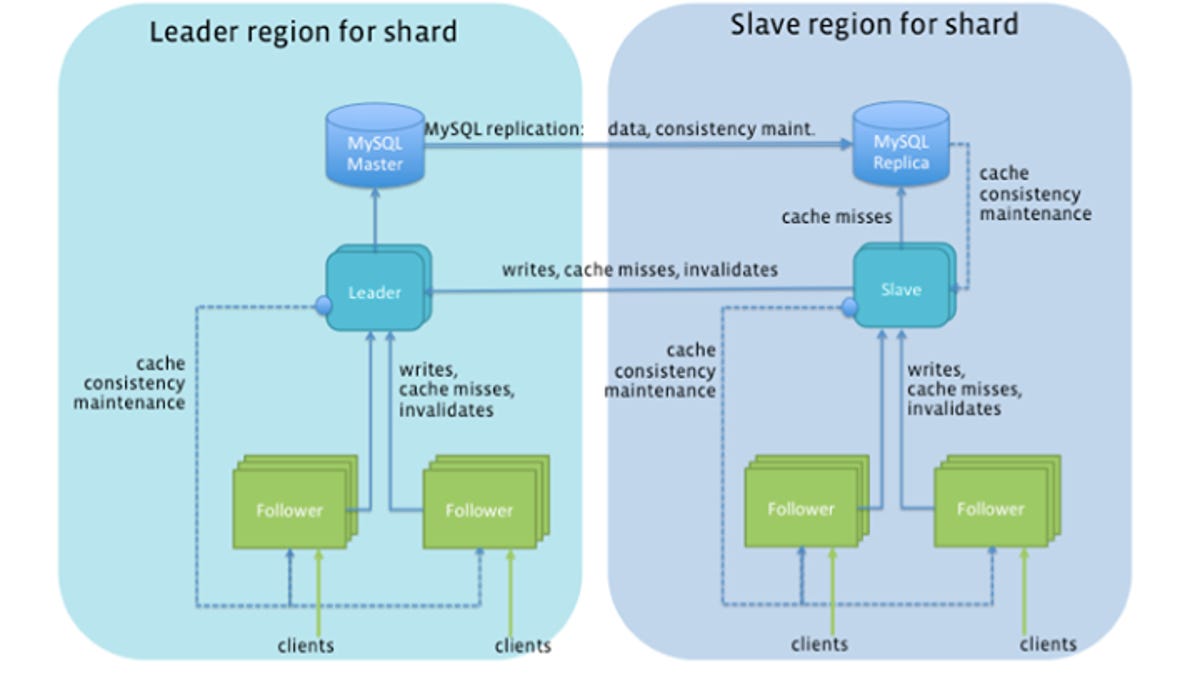With TAO, Facebook shatters data into shards
Facebook's engineering team outlines the design of "The Associations and Objects," the social network's graph data store.

Facebook has dropped in yet another tile to the puzzle that is its intricate data infrastructure serving more than a billion users worldwide.
This time the focus is on TAO, or "The Associations and Objects," a core component of Facebook's data infrastructure that runs on a large collection of geographically scattered server clusters.
Actually already several years into production, TAO is the underbelly of the implementation of most of Facebook's core features.
To get a grasp of just how robust this system needs to be, TAO serves thousands of data types while handling more than a billion read requests and millions of write requests per second.
Facebook software engineer Mark Marchukov explained in a blog post on Tuesday how vast numbers of data sets on the world's largest social network are partitioned into hundreds of thousands of "shards" to make more efficient use of the server hardware.
There are two tiers of caching clusters in each geographical region. Clients talk to the first tier, called followers. If a cache miss occurs on the follower, the follower attempts to fill its cache from a second tier, called a leader. Leaders talk directly to a MySQL cluster in that region. All TAO writes go through followers to leaders. Caches are updated as the reply to a successful write propagates back down the chain of clusters. Leaders are responsible for maintaining cache consistency within a region. They also act as secondary caches, with an option to cache objects and associations in Flash. Last but not least, they provide an additional safety net to protect the persistent store during planned or unplanned outages.
Marchukov pointed out how this all needs to be accomplished in record time too as a "data set must be retrieved and rendered on the fly in a few hundred milliseconds."
Every time any one of over a billion active users visits Facebook through a desktop browser or on a mobile device, they are presented with hundreds of pieces of information from the social graph. Users see News Feed stories; comments, likes, and shares for those stories; photos and check-ins from their friends -- the list goes on. The high degree of output customization, combined with a high update rate of a typical user's News Feed, makes it impossible to generate the views presented to users ahead of time.
The nitty-gritty details about the design and implantation of TAO as well as related APIs are available on the Facebook Engineering blog now.
Image via The Facebook Engineering Blog
This story originally appeared at ZDNet's Between the Lines under the headline "Facebook explains how 'TAO' serves social workloads, data requests."

